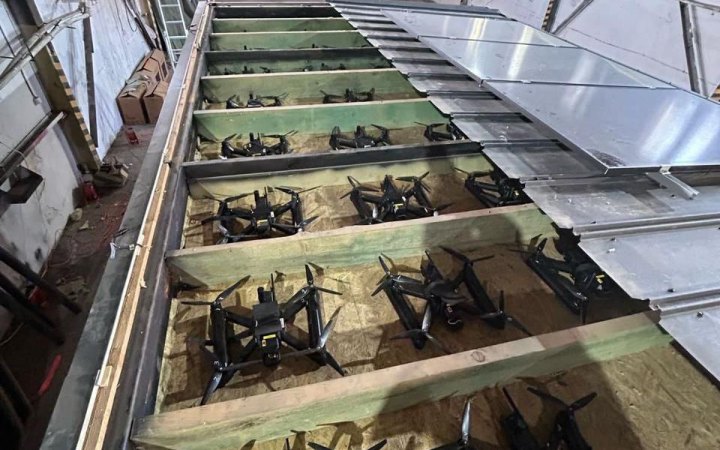Russian bombers flee to Far East after operation Spiderweb attack. Tu-95 will now need 23 hours for Ukraine missile missions

Militarnyi reported that following Ukraine’s operation Spiderweb that targeted Russian strategic bombers at five bases, Russia was forced to redeploy key elements of its strategic aviation fleet to airbases in the Far East, complicating its ability to launch missile strikes on Ukrainian territory.
Amid the ongoing Russo-Ukrainian war, Moscow has been extensively using its strategic bomber fleet—originally intended as part of its nuclear deterrent—for launching conventional cruise missiles against Ukraine. Earlier this month, a coordinated Ukrainian drone strike destroyed a double-digit number of Russian bombers, delivering a significant blow to Russia’s capacity for large-scale air-launched missile attacks.
According to OSINT sources, including the Tracking Telegram channel, two Tu-160 bombers previously based at Belaya airbase were relocated to the Anadyr airfield. An additional five Tu-160s were moved to Yelizovo airbase. These facilities are located 6,770 km and 7,250 km from Ukraine respectively.

Meanwhile, Tu-22M3 bombers based at Olenya are periodically transferred to Sovetsky airfield in the Komi Republic, approximately 2,400 km from Ukrainian borders. Tu-95MS aircraft now operate between Olenya, Engels-2, and Ukrainka airbases.
For launching Kh-101 cruise missiles, Tu-95MS bombers stationed at Ukrainka must fly at least 7,000 km to reach launch areas near Saratov Oblast, and then return another 5,400 km. This creates a 12,400 km mission round trip, lasting up to 23 hours in the air.
Operational impact and aviation strain
Russia’s dispersal of its strategic bombers aims to reduce vulnerability by spreading aircraft across remote airbases. However, this has introduced significant complications, including excessive flight time, accelerated wear of aging airframes, heightened crew fatigue, and increased maintenance costs, Militarnyi notes. The added distance also increases the likelihood of technical failure or human error, raising the risk of crashes.
The strain on Russian aviation logistics could in the long run reduce the frequency of air-launched cruise missile strikes on Ukraine.
SBU’s Operation Pavutyna
On 1 June 2025, the Security Service of Ukraine (SBU) launched Operation Pavutyna (“Spiderweb”), a large-scale special operation targeting Russia’s strategic bombers. The targets included Belaya, Ivanovo, Ukrainka, Olenya, and Dyagilevo airbases.
Militarnyi says preliminary assessments indicate that at least 8 Tu-95MS (or Tu-95MSM), 12 Tu-22M3, 2 A-50 early warning aircraft, 1 An-12 transport plane, and possibly 1 Il-78M tanker were hit by Ukrainian drone strikes.
Russia’s Tu-160 bomber use in missile attack last night proves Tu-95 shortage after operation Spiderweb, Militarnyi says
Though a full set of satellite images has not yet been published. Notably, the strike on one Tu-95MS seen in satellite imagery is not included in the videos.
“In addition, the video footage released by the SBU is incomplete: it does not show the damage to one of the Tu-95MS aircraft, which is visible in satellite images,” Militarnyi wrote.
Read also
-
Ukrainian airstrike levels Russian military facility in Kursk Oblast (video)
-
Frontline report: Ukrainian Spiderweb operation triggers mass paranoia as Russia hunts threats in every truck
-
After months, Ukraine resumes strikes on Russian fuel depots, targets airfields and military factories (video)
-
Breaking: Russian strategic bombers ablaze en masse under SBU drone attack (video)






